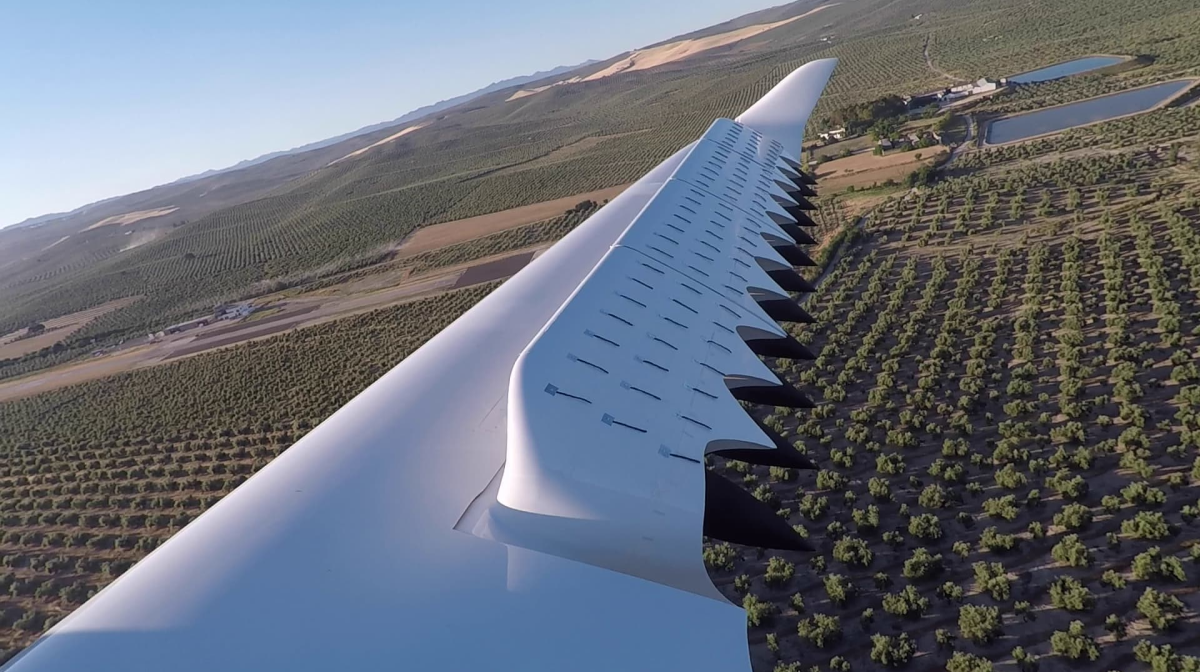Lilium reports major air taxi milestone
By Paul Brinkmann|June 3, 2022
Demonstrator aircraft transitioned from vertical thrust to winged lift, company says
Lilium’s Phoenix 2 unoccupied demonstrator lifted off vertically from a test site in Spain on May 31 and for the first time carried out its unusual mode of transition to winged flight, the suburban Munich-based company reported.
The craft’s individual flaps and electrically driven ducted fans pivoted during the transition to form a wing. Achieving air flow attachment on this wing was a “critical milestone since it shows that we can move safely and smoothly from the hover phase to cruise where the aircraft acts like a normal fixed-wing aircraft — another validation for our efficient distributed electric jet architecture,” Lilium explained in an email response to my questions.
Phoenix 2 remained stable during the transition and the four-minute flight, behaving as predicted by the company’s flight dynamics model, the company said in a press release.
The Phoenix 2 demonstrator was powered by all 36 of its electric ducted fans tucked under 36 controllable flaps — 24 on the main wing and 12 on the forward canards, according to the company. Lilium’s certification and production aircraft, the Lilium Jets, will have 30 motors — 20 on the main wing and 10 on the canards. The company calls this propulsion technology .
“We plan to start building our first handful of conforming aircraft [for European and FAA certification] in 2023,” the company said. “Upon completion of those, we will then spend the following 15 to 18 months running our final test campaign with the aim of receiving our initial Type Certification [from the European Union Aviation Safety Agency] in 2025, with scale production of our aircraft set to begin immediately upon certification.”
Lilium says FAA has agreed to concurrent validation, which means data from the EASA certification would satisfy FAA requirements.
“Electric jet engines integrated into the wing flaps provide advantages in payload, aerodynamic efficiency, and a lower noise profile, while also providing thrust vector control to maneuver the Lilium Jet through every phase of flight,” according to a blog post by the company.
Lilium’s competitors rely on varied technology to provide thrust. Joby Aviation of California, for instance, applies tilting open-blade rotors.
Lilium said it will continue its flight test campaign in the coming months, expanding the flight envelope, including high-speed flights. Lilium plans to launch air taxi networks in Germany, Brazil and Florida.
Related Topics
Advanced air mobilityGet the latest news about advanced air mobility delivered to your inbox every two weeks.






